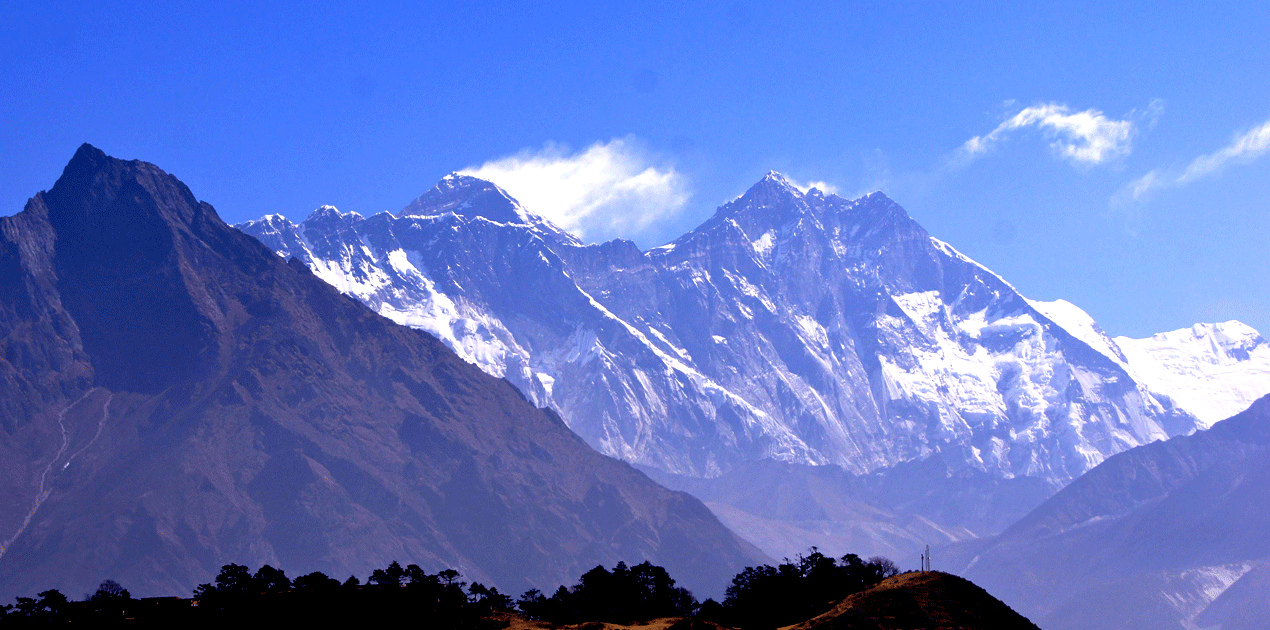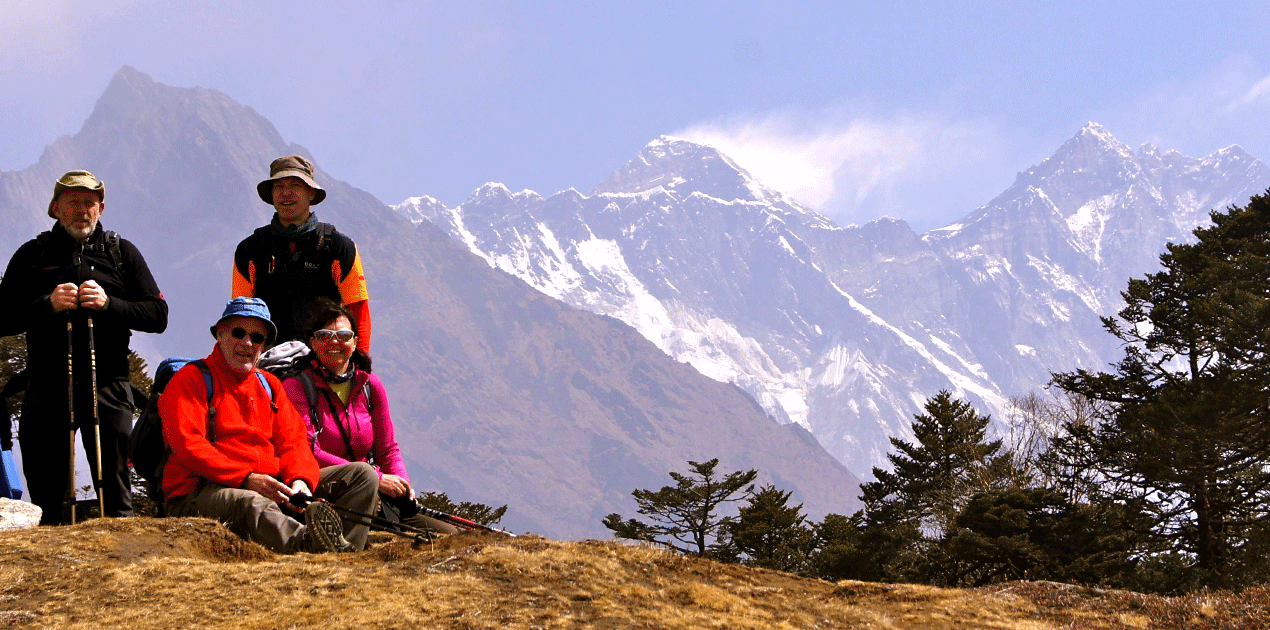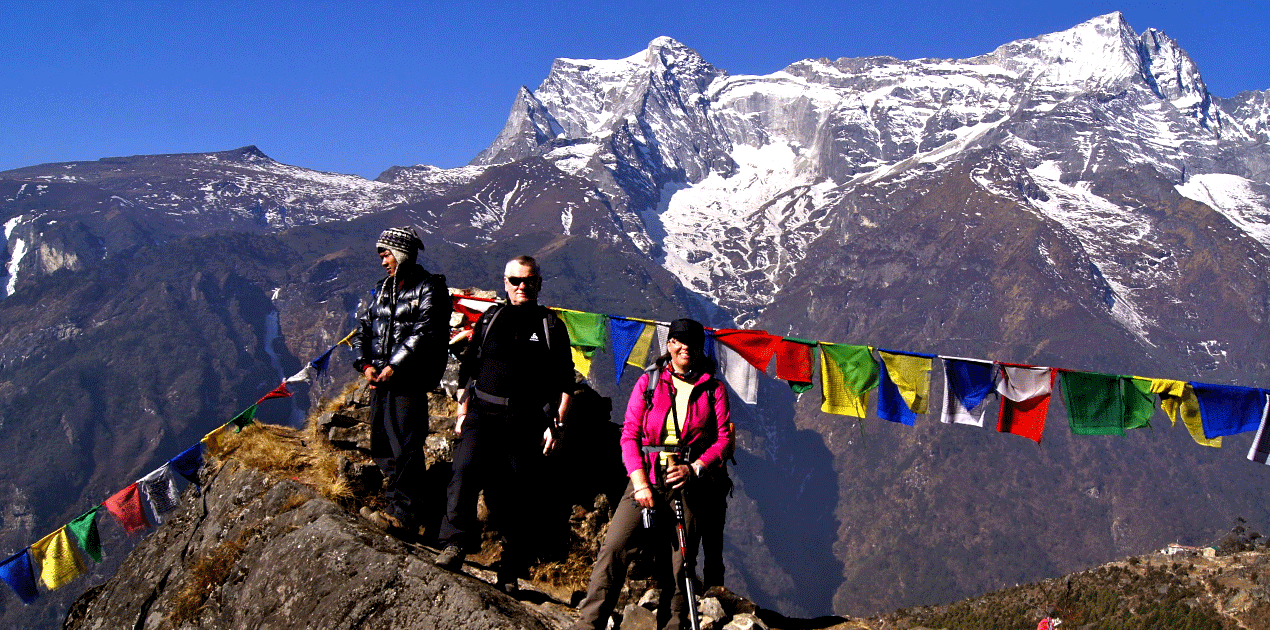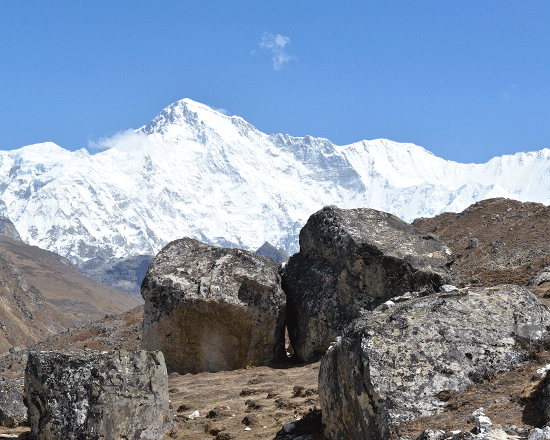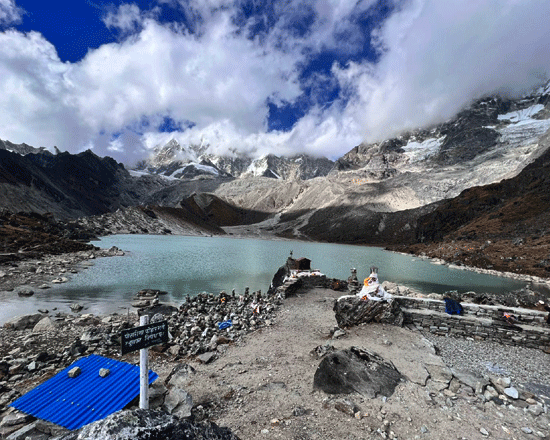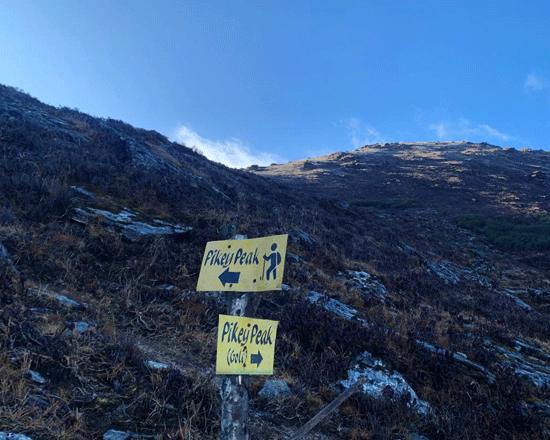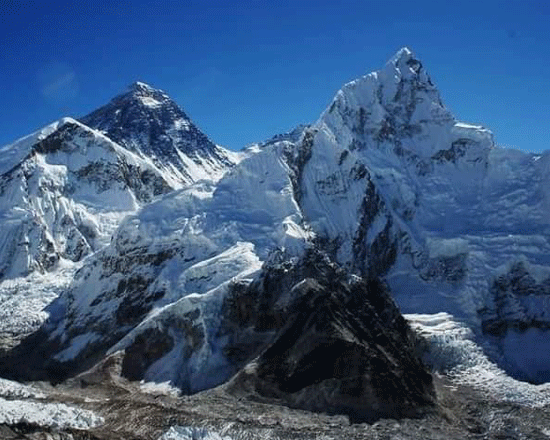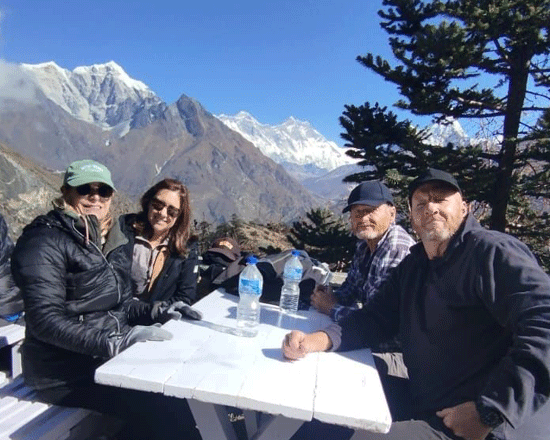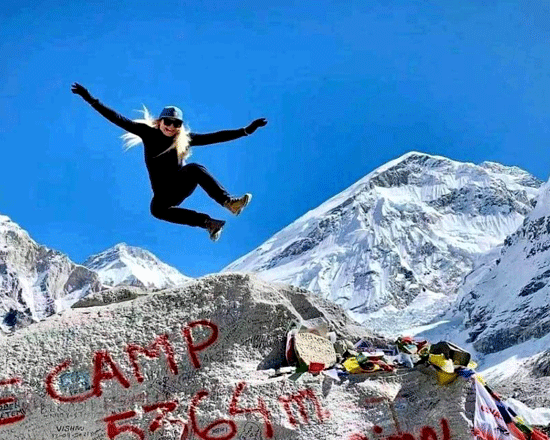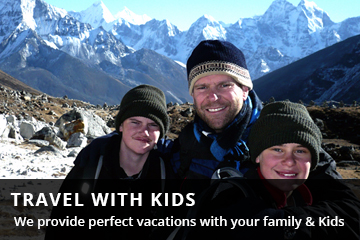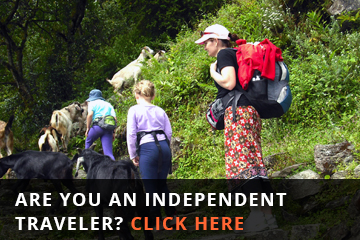Namche Bazaar Trek
Namche Bazaar Trek
Everest RegionTrip Facts
Since the terrain can be hard and the days long, hikers on these treks should be in good physical condition and have some previous mountain walking experience. Steep climbing may be involved, although it is never necessary to use ropes. Treks at this level can he arranged for periods of 16 to 21 days. Typically, a gradual ascent through a green river valley will lead you up to a number of high passes, where you will reach the altitude of 5416m. Often times, you will get a close insight into the Tibetan culture. Participants should expect to trek above 5416m/17872ft.
Mode of Travel : Flight/Land100%
Overview
Namche Bazaar Trek: Embarking on the Journey to Everest’s Heart
The Namche Bazaar Trek is the most popular and sought-after trekking route in the Everest region of Nepal, renowned for its awe-inspiring Everest Panorama View Trek. This captivating journey begins with a flight to Lukla, home to Hillary’s tiny airport, and culminates after a night’s rest in Phagding or Manjo. For those yearning to glimpse the majestic Mount Everest within a relatively short timeframe, the four-day Lukla to Namche Bazaar Trek (commonly called the Everest Panorama View Trek) is the perfect choice.
Namche Bazaar Trek serves as the point of attraction for trekkers worldwide, drawn by the allure of the Everest Base Camp trek, along with a rich tapestry of Sherpa culture. In terms of commercial activity, the Namche bazaar trek outstrips many other mountain region treks in Nepal, boasting an array of hotels offering top-tier accommodations and dining experiences.
At an altitude of 3,440 meters above sea level, Namche Bazaar is home to the renowned Sherpa Museum. From this vantage point, one can capture the best view of the world’s highest peak, Mount Everest, along with an array of other pristine white-capped peaks.
For trekkers venturing into the Everest region, Namche Bazaar Trek serves as the gateway to the high Himalayan destinations of Gokyo Lakes and Everest Base Camp via the Three Passes trek. Trekkers typically spend at least two nights in Namche Bazaar to facilitate acclimatization to the high-altitude environment. The village boasts numerous shops and lodges, ensuring that trekkers can procure almost everything they require for their journey, at slightly higher prices than those in Kathmandu. As one ascends further into the Khumbu, costs tend to rise.
Highlights of Namche Bazaar Trek
- Sagarmatha National Park Visitor Center: Offers information about the park’s biodiversity, geology, and conservation efforts.
- Sherpa Culture Museum: Displays artifacts and exhibits related to Sherpa history, culture, and mountaineering.
- Namche Monastery: A significant religious site for the local Buddhist community.
- Sightseeing: Stunning Everest views, Lhotse, Ama Dablam, and other peaks can be enjoyed from various vantage points around Namche.
- Friday Market: A weekly market where locals and trekkers can buy fresh produce, clothing, and other goods.
Exploring the Sherpa Culture and History
During the five-day Namche Bazaar Trek, trekkers have the opportunity to immerse themselves in the unique culture and history of the Sherpa people. The short day trek can be beheld with kids having energetic strength as it fosters their ability in adventures.
- Inhabitants: Primarily Sherpa people, known for their mountaineering skills and rich cultural heritage.
- Language: Sherpa and Nepali, with English, commonly spoken in the tourism sector.
- Religion: Predominantly Tibetan Buddhism, evidenced by the presence of monasteries, prayer flags, and mani stones.
Sherpa Museum
The Sherpa Museum, near the summit of the village, provides valuable insights into the rich weaving of Sherpa heritage. Additionally, the Sherpa Culture Library offers opportunities for in-depth research and exploration of the Sherpa. Additionally, here are the key exhibits and features showcased in the museum;
Sherpa Artifacts and Tools
- Traditional Clothing: Displays of traditional Sherpa attire, including the distinctive chuba (a long-sleeved robe), and other garments are worn during different seasons and ceremonies.
- Household Items: Collection of everyday utensils, tools, and kitchenware used by Sherpa families.
- Agricultural Tools: Implements used in farming and animal husbandry, showcasing the traditional lifestyle of the Sherpa community.
Mountaineering Equipment
- Historic Gear: Early climbing equipment used by Sherpa climbers and Western mountaineers, including ice axes, crampons, ropes, and oxygen tanks.
- Expedition Artifacts: Memorabilia from famous Everest expeditions, including items used by Sir Edmund Hillary and Tenzing Norgay during their historic ascent in 1953.
Photographs and Documents
- Historic Photographs: Archival photos depicting the history of mountaineering in the Everest region, notable Sherpa figures, and significant cultural events.
- Documents and Letters: Important documents, expedition logs, and personal letters from prominent climbers and explorers.
Cultural and Religious Artifacts
- Religious Items: Displays of Buddhist religious artifacts, such as prayer wheels, thangkas (Tibetan Buddhist paintings), and statues of deities.
Ceremonial Items: Items used in traditional Sherpa ceremonies and rituals, highlight the rich spiritual heritage of the community.
Other thematic sections of the museum
Sherpa Lifestyle and Traditions
- Daily Life: Insights into the daily routines, customs, and social structure of the Sherpa people.
- Festivals and Celebrations: Information on major Sherpa festivals like Losar (Tibetan New Year) and Dumje, including the rituals and activities associated with these celebrations.
Mountaineering History
- Everest Expeditions: Detailed accounts of significant Everest expeditions, focusing on the role of Sherpa climbers and their contributions to mountaineering.
- Sherpa Climbers: Profiles of renowned Sherpa climbers who have made significant achievements in the field of mountaineering.
Additional Features includes
- Multimedia Presentations
- Documentary Films: Screening of documentaries about Sherpa culture, the history of mountaineering in the Everest region, and the environmental challenges faced by the Himalayas.
- Interactive Displays: Touchscreen displays and audio-visual presentations that provide an engaging way to learn about Sherpa culture and mountaineering history.
2. Replica Sherpa House
- Traditional Home Setup: A full-scale replica of a traditional furnished Sherpa house, showcasing the architectural style, and interior layout.
3. Educational Programs
- Guided Tours: Expert-led tours that offer in-depth explanations of the exhibits and provide additional context about Sherpa culture and history.
- Workshops and Talks: Occasional workshops, and lectures by historians, climbers, and local experts on various topics.
Especially of Namche Bazaar Trek
Every Friday, a bustling bazaar descends upon Namche, attracting individuals from the surrounding areas who come to exchange goods. Namche Bazaar, the central hub of the Khumbu region, offers a vibrant marketplace where the locals trade a diverse array of products.
The Sagarmatha National Park office, with commanding views of Tengboche Monastery, Kongde Ri at 6,187 meters, and Thamserku at 6,608 meters.
Tips for Visitors
- Health Precautions: Stay hydrated, avoid alcohol, and be mindful of altitude sickness symptoms.
- Respect Local Culture: Dress modestly, ask for permission before taking photos of people, and respect religious sites.
Guided by Professionals: The Namche Bazaar Trek Experience
The Namche Bazaar Trek, including the Everest Panorama View Trek, is led by the expert team, Nepal Wilderness Trekking. Our professional guides are very familiar with the Namche Bazaar areas, having deep insights into its people, cultures, histories, and natural wonders. Our dedicated team of guides and porters are insured, and well-equipped to ensure your safety and comfort journey. We think of exceptional service to our valued customers, ensuring the Namche Bazaar Trek is nothing short of extraordinary.
In conclusion, the Namche Bazaar Trek gateway to the Everest region, offers natural beauty, Sherpa culture, and the allure of the Himalayas converge. Also, this trek is an invitation to explore and embrace the enchantment of the Himalayas. Let the captivating spirit of Namche Bazaar lead you on a journey of discovery and wonder in the heart of Everest’s majestic realm.
Detail Itinerary
- Day 01: Flight to Lukla early in the morning (2827 meters. 35 minutes) and trek to Phakding (2640 meters.3 hours walking) stay overnight at Lodge.
- Day 02: Trek to Namche Bazaar (3440 meters. 6/7 hours walking) stay overnight at Lodge.
- Day 03: Explore Everest View Hotel to see Mount Everest and visit Khumjung Sherpa
- Day 04: Trek back to Lukla (4 ½ hours walking) stay overnight at Lodge.
- Day 05: Flight back to Kathmandu early in the morning (35 minutes)
Cost Included
- Domestic flight tickets from Kathmandu to Lukla and Lukla to Kathmandu
- Italian, Chinese, Nepali, Indian, and other European foods are available three times a day (breakfast, lunch, and dinner).
- Accommodation in tea houses according to the itinerary
- Kitbag for storing your belongings
- Sleeping bag for a comfortable night's sleep on a trek in minus-25 degrees
- Everest National Park Entrance Trekking Permit
- Khumbu Pasang Lhamu Rural Municipality Entrance Permit
- Experienced English-speaking trekking guide licensed by the government, familiar with the area.
- One porter for every two to three participants. (Note: An additional cost applies for solo clients requiring a porter.)
- Guide, and Porter meals, accommodation, salary, and insurance
- Necessary paper works, all government, and local taxes
- A certificate of appreciation from Nepal wilderness trekking after a successful trek
Cost Excluded
- Airfare for international flights
- Upon arrival at Tribhuwan International Airport, Nepal entry visa fees vary by duration (15 days - $25-30, 30 days
- Accommodations and meals in Kathmandu before and after our journey
- Personal equipment for high and cold temperatures
- Emergency high-altitude rescue and evacuation are covered by travel insurance
- All beverages, Soft and caffeinated table drinks such as coke, beer,
- Drinking water/mineral water, Dessert, etc. Hot shower, laundry
- Tip for guide and porter
- Excluded are all costs and expenses not listed under "cost includes"
- Inclusion of costs or delays beyond the control of the management, such as landslides, weather conditions, itinerary modifications due to safety concerns, illness, changes in government policies, strikes, etc.

